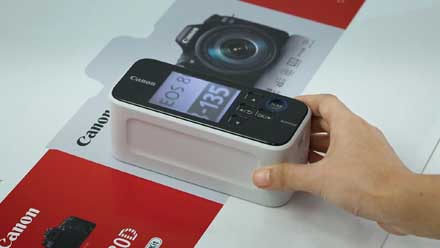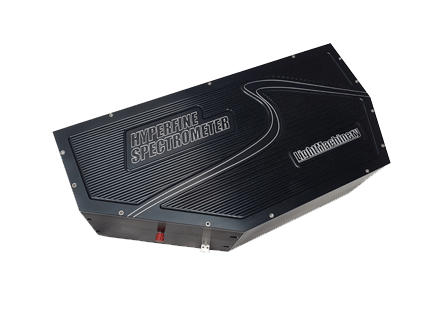|
Thursday, December 7, 2017 |
|

|
|
|

|
| sponsor |
 |
|
Holographic Technique Uses Deep Learning to Increase Accuracy, Improve Microscopy
Deep learning, one of the key technologies behind advances in real-time speech recognition and automated image and video labeling, is being used to reconstruct holograms to form microscopic images of samples. Researchers are using a convolutional neural network-based method that is trained through deep learning to rapidly perform phase recovery and holographic image reconstruction.
|
|
|
|
|
|
Quantum Optics Lead to Spectroscopy Method for Measuring on FS Time Scale
Scientists have demonstrated a time-resolved spectroscopy technique that enables the study of very fast processes in samples on the femtosecond (fs) time scale without the need for an fs laser or a complex detection system. The method works by analyzing quantized light transmitted through a sample. It relies on single photons to study the interactions and processes occurring in the samples and ordinary lasers to produce the photons.
|
|
|
|
|
|
 Canon Surface Reflectance Analyzer
Canon Surface Reflectance Analyzer
Canon U.S.A. Inc., Industrial Products Div.
Canon RA-532H, Surface Reflectance Analyzer (goniophotometer), is a compact, portable device capable of measuring gloss, haze, image clarity (IC), and BRDF (Bidirectional Reflectance Distribution Function) in a single pass. Canon has released its own new parameters, C20 and C60, which overcome the shortage of both IC and DOI (Distinctiveness of Image)...
Visit Website
Request Info
|
|
|
 The HyperFine Spectrometer
The HyperFine Spectrometer
LightMachinery Inc.
Designed for measuring hyperfine spectra and subtle spectral shifts, the HyperFine spectrometer from LightMachinery is a compact, low cost spectrometer capable of sub-picometer resolution. It is ideal for pulsed laser characterization and for measuring the small spectral shifts from Brillouin scattering.
Visit Website
Request Info
|
|
|
|
|
|
Coupling Perovskite to Nanophotonic Cavities for More Efficient Optoelectronics
To boost the efficiency of perovskite as a light source for optoelectronics, researchers coupled lead halide perovskite nanocrystals to a nanophotonic cavity. The research team drop cast perovskite nanocrystals in a toluene solution onto a silicon nitride (SiN) cavity. They then excited the device with a pulsed laser, which led to photon emission from the nanocrystals.
|
|
|
|
|
|
Visible Light Controls Chemical Reaction Pathways, Could Be UV Alternative
A technique has been developed that modulates visible colored light, enabling it to control the reactions of chemical coupling agents needed to make industrial materials. Researchers showed that the modulation of the reactivity by light could be reversed, and that individually addressable reaction pathways could be repeatedly accessed.
|
|
|
|
|
|
Four-Wave Mixing Technique Paves Way for Optical Processing Read Article
University of Toronto Astronomers Receive $23M in Funding Read Article
Researchers Manipulate Light to Make Optical Chip Invisible Read Article
Motic Partners With Bill Gates', Intellectual Ventures' Global Good Fund Read Article
Pulsed Laser Irradiation Enhances Antibacterial Properties of Nanoplates Read Article
|
|
|
|
BiOS 2018
January 27-29, 2018 - The Moscone Center - San Francisco United States
SPIE BiOS 2018, part of SPIE Photonics West, encompasses clinical, translational and fundamental research and development in the field of biomedical optics and photonics. It provides a technical forum for reporting and learning about the latest research and development, as well as for launching new applications and technologies. This year BiOS will offer 2,400 papers and presentations on a range of topics that include biomedical optics, diagnostics and therapeutics, biophotonics, new imaging modalities, optical coherence tomography, neurophotonics, optogenetics, tissue optics and nano/biophotonics.
|
|
|
|
 |
|
|
|

CALL FOR ARTICLES!
Photonics Media is currently seeking technical feature articles on a variety of topics for publication in our magazines (Photonics Spectra, Industrial Photonics, BioPhotonics and EuroPhotonics). Please submit an informal 100-word abstract to Managing Editor Michael Wheeler at Michael.Wheeler@Photonics.com, or use our online submission form.
|
|
|
|